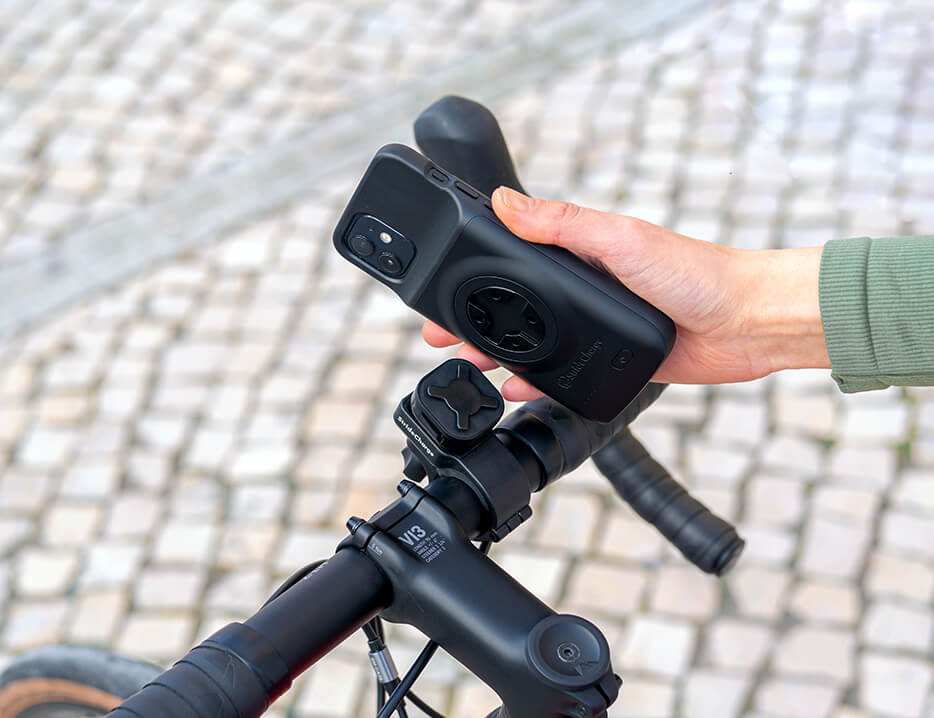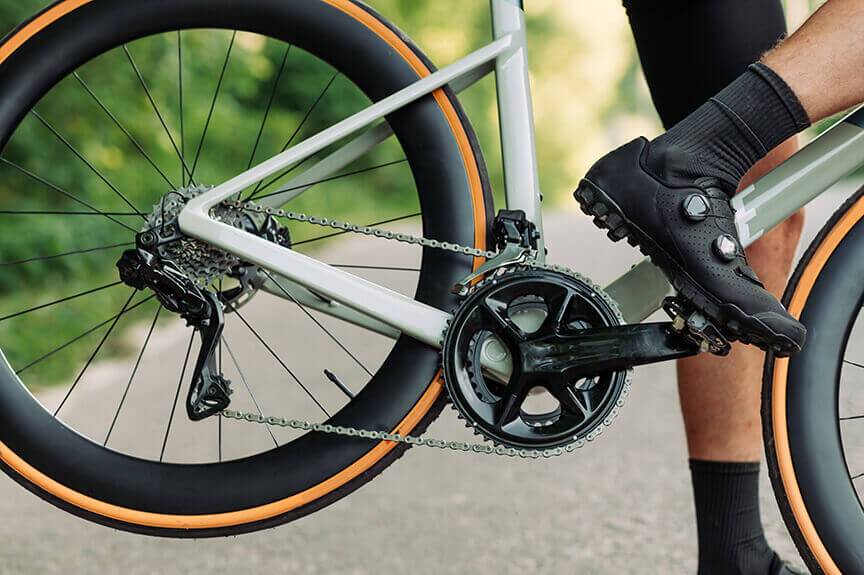Are you ready to transform the way you ride and embark on epic long-distance cycling adventures? If you’ve been yearning to conquer endurance rides, we’re here to guide you every pedal of the way. From building endurance to fueling your body, pacing strategies to essential repair skills, we’ve got you covered. Let’s power up your pedals and dive into the exciting world of cycling for long distance!
Key Takeaways
- Building a solid foundation in endurance, muscle strength, and choosing the right gear is paramount for successful long-distance cycling.
- Creating effective nutrition strategies for pre-ride, in-ride, and post-ride is essential for maintaining energy levels and facilitating recovery during extended cycles.
- Mastering the art of pacing and energy management, as well as preparing for mechanical issues and safety protocols, ensures a smoother and safer long-distance cycling experience.
Essentials of Long Distance Cycling

Conquering the realm of long-distance cycling requires a solid foundation. It’s all about building endurance, strengthening your muscles, and selecting the right gear. These key aspects form the backbone of your long bike ride, ensuring you’re well-equipped to tackle those miles with confidence and vigor.
So, how do we initiate this thrilling adventure? We’ll delve into these vital elements further.
Building Aerobic Endurance
When it comes to long-distance cycling, building aerobic endurance is your secret weapon. It’s all about increasing your ride distances gradually and incorporating recovery rides. This approach enhances your cardiovascular fitness and stamina, preparing you for the demands of a long distance bike ride.
Imagine being able to sustain high levels of effort over a prolonged period, all while enjoying your ride. This is the advantage of developing aerobic endurance, which is closely related to the efficiency of your aerobic and muscular systems!
Muscular Strength and Efficiency
Muscular strength is the key to unlocking pedaling efficiency and sustaining a strong effort throughout your long rides. By focusing on targeted exercises and rides, you can elevate your overall performance. It’s like having a secret power that makes long rides easier and more comfortable, ultimately enhancing your overall performance.
Isn’t that something everyone would want on their long-distance cycling adventure?
Gear Selection for the Long Haul
Imagine setting off on a long ride only to be held back by discomfort from your gear. That’s a cyclist’s nightmare. Hence, choosing the right efficient gear is essential for ensuring maximum comfort, durability, and performance during those long rides.
You need gear robust enough to meet the demands of ultra-distance cycling while ensuring sustained energy levels. We’ll examine the best gear options for your extensive ride.
Nutrition Strategies for Sustained Energy

Can you imagine tackling a long-distance ride without fueling your body right? That would be like trying to drive a car without gas. Your body needs the right long distance cycling nutrition to sustain energy levels and promote recovery during and after your long-distance cycle.
From pre-ride meals to in-ride hydration and post-ride nutrition, we’ll examine how you can nourish your body for successful and invigorating long rides.
Pre-Ride Fueling
A great long ride begins with a well-fueled body. Before embarking on your journey, it’s crucial to consume a balanced meal rich in carbohydrates and protein. This ensures your energy stores are adequately filled, setting you up for a smooth and energizing ride. Remember, the fuel you put in your body can make or break your ride.
In-Ride Hydration and Snacking
As you conquer miles on the road, it’s vital to keep your energy levels up. Staying hydrated and consuming small, frequent snacks during your ride can make a world of difference. It’s like refueling your car during a long journey.
Regular hydration and snacking keep your energy up, preventing fatigue and ensuring you can keep pedaling strong.
Recovery Nutrition
After a long ride, your body needs to replenish its energy stores and repair muscles. This is where recovery nutrition comes in. Consuming a balanced mix of carbohydrates and protein post-ride aids in:
- Replenishing energy stores
- Supporting muscle repair
- Setting you up for a quick recovery
- Preparing you for your next ride.
Pacing and Strategy on the Road

Pacing is an art, especially when it comes to long-distance cycling. It’s about managing your effort levels and planning breaks strategically to optimize performance and enjoyment during long rides. A steady, sustainable pace not only conserves energy but also makes the ride more enjoyable.
We’ll delve into the skill of pacing, managing exertion levels, and scheduling breaks.
The Art of Pacing
Maintaining a steady, sustainable pace throughout your ride is critical to conserving energy and preventing burnout. Imagine your ride as a marathon, not a sprint. By keeping your pace steady, you can ensure you have the energy to complete the ride without exhausting yourself prematurely.
It’s akin to possessing a hidden strength that lets you relish the journey while guaranteeing you cross the finish line.
Managing Exertion and Heat Levels
Staying in tune with your body’s heat and exertion level is crucial during a long ride. By monitoring your effort and body temperature, you can adjust your pace and clothing as needed to stay comfortable and efficient. Remember, overheating or overexerting can lead to fatigue and even health issues.
Hence, heed to your body and adjust as necessary.
Planning Breaks and Checkpoints
While long rides are about endurance, they also require strategic breaks to refuel, rest, and reassess your performance. Planning regular breaks and checkpoints during your ride allows you to stay energized and make any necessary adjustments to your pace or strategy. It’s like having mini pit-stops that help you stay on top of your game throughout the ride.
Preparing for the Unexpected: Safety and Repair on Long Rides

As with any adventure, long-distance cycling comes with its share of unexpected challenges. From sudden mechanical issues to changes in weather, being prepared helps you tackle these unexpected events head-on. That’s where essential repair skills, a comprehensive repair kit, and established safety protocols come into the picture.
We’ll examine how you can get ready for unexpected situations on your extensive rides.
Essential Repair Skills
Being well-versed in basic bike maintenance and repair skills can be a lifesaver during long rides. Imagine being able to:
- Fix a flat tire
- Adjust a misaligned brake
- Replace a broken chain
- Tighten loose bolts
- Lubricate the chain
These skills not only save you time and stress but also ensure your ride remains smooth and enjoyable.
StrideCharge Companion

Imagine being on a long ride and your phone runs out of charge! That’s where the StrideCharge comes in. This portable charger ensures that your mobile devices are powered up throughout your extended rides.
It’s an excellent ally for any long-distance cyclist, especially when riding a mountain bike or exploring road bikes.
Packing Smart: The Repair Kit Checklist
Having a comprehensive repair kit is crucial for long-distance cycling. It includes essential tools and spare parts to address common mechanical issues on the road. Assembling a repair kit ensures you’re prepared to handle any mechanical issues that may come your way during your ride.
Safety Measures and Emergency Protocols
Establishing safety measures and emergency protocols ensures a safe and enjoyable long-distance cycling experience. From wearing a helmet to obeying traffic laws and carrying essential safety equipment, these measures can prevent accidents and ensure a smooth ride.
Route Planning and Navigation for Cyclists
A successful long-distance ride begins with meticulous route planning, whether it’s for a casual journey or a challenging event like the silk road mountain race. It’s all about assessing the terrain and elevation, and adapting to changing conditions. Whether it’s inclement weather or a sudden road closure, being prepared to adapt your route ensures a smooth and enjoyable long-distance ride.
Mapping Your Journey
Mapping your cycling route is not just about reaching your destination—it’s about making the journey enjoyable and challenging. With the right mapping tools, you can incorporate scenic and challenging elements into your route.
So, it’s not just about the destination, but the journey as well - just what makes traveling so fulfilling.
Assessing Terrain and Elevation
The terrain and elevation of your route can greatly impact your ride. Assessing these factors beforehand allows you to tailor your training and prepare for the ride’s challenges.
Whether it’s a steep hill or a winding path, being prepared ensures a smooth and enjoyable ride.
Adapting to Changing Conditions
Changing weather, road conditions, or other unforeseen circumstances can present unexpected challenges during a long ride. However, being prepared to adjust your route and plans ensures a smooth and enjoyable ride. After all, adaptability is key to mastering long-distance cycling.
Training Regimens and Exercises for Long Distance Riders
Training is an integral part of preparing for a long-distance ride. A structured training plan, hill climbing workouts, and cross-training exercises not only improve your overall fitness but also enhance your long-distance cycling performance.
We’ll explore these diverse training regimens and exercises.
Structured Training Plans
A structured training plan is your roadmap to success in long-distance cycling. It gradually builds your endurance, strength, and cycling skills, preparing you for the challenges of long rides. Following a structured training plan ensures you train smart and reach your cycling goals.
Hill Climbing and Interval Workouts
Hill climbing and interval workouts are like secret weapons for long-distance cyclists. These workouts develop power and stamina, preparing you for challenging terrains in your route.
Incorporating them into your training regimen ensures you’re prepared to tackle any hill or incline on your route.
Cross-Training for Overall Fitness
Cross-training is a great way to improve your overall fitness and enhance your long-distance cycling performance. Activities like:
- swimming
- running
- strength training
- yoga
- stair climbing
not only boost your fitness levels but also prevent injuries.
So, why not diversify your training routine and enjoy the benefits of cross-training?
Elevating Your Ride Experience
Long-distance cycling is not just about endurance and performance—it’s also about enjoying the ride. From connecting with fellow riders to discovering new routes and listening to your body, there are many ways to enhance your ride experience, even when covering long distances.
We’ll examine how you can enhance your long-distance cycling experience.
The Social Aspect of Cycling
Cycling is a sport that brings people together. Joining bike rides, clubs, or events not only makes your rides more enjoyable but also builds camaraderie.
Imagine sharing the thrill of conquering a challenging route with fellow riders, just like in the Tour de France. That’s the beauty of the social aspect of cycling.
Discovering New Routes and Adventures
New routes and destinations keep your cycling experiences fresh and exciting. Whether it’s a scenic route or a challenging trail, discovering new routes adds an element of adventure to your rides.
Why not discover a new path on your subsequent ride?
Listening to Your Body
Your body is your best guide during long rides. It tells you when to:
- push harder
- take it easy
- fuel up
- rest
Listening to your body’s signals helps you adjust your pace, nutrition, and rest periods, ensuring you have an optimal performance and enjoyable ride.
Summary
We’ve covered quite a distance on our long-distance cycling journey, haven’t we? From building endurance to fueling your body, planning your route to training smart, every pedal stroke brings you closer to mastering long-distance cycling. Remember, it’s not just about the destination, but the ride itself. So, gear up, pedal on, and enjoy the ride!
Frequently Asked Questions
Can I cycle 100 miles without training?
No, it's not recommended to attempt cycling 100 miles without significant training. Even seasoned cyclists need to prepare their bodies for the distance. So, start training, and you'll get there!
How to cycle 100 miles in a day?
Train gradually to comfortably ride 70 or more miles, and you'll be able to cycle 100 miles in a day without pushing yourself too hard. Good luck!
How can I cycle long distances without getting tired?
To cycle long distances without getting tired, remember to stay hydrated, eat well, and take regular breaks to rest and stretch your legs. Keeping your body hydrated, fueled, and rested will help sustain your energy throughout the ride.
What is considered a long bike ride?
A long bike ride is typically considered to be a distance of 50 miles or more, although it can vary based on individual fitness levels and experience. Some experienced cyclists may consider a long ride to be closer to 100 miles or even longer.
How can a cyclist build aerobic endurance for long rides?
To build aerobic endurance for long rides, gradually increase your ride distances and incorporate recovery rides to enhance cardiovascular fitness and stamina. This will help you improve your ability to handle longer rides and build endurance over time.




Leave a comment
This site is protected by hCaptcha and the hCaptcha Privacy Policy and Terms of Service apply.